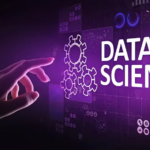
Data Science for Web Scraping and Competitor Analysis in Internet Marketing
Introduction
Think of internet marketing as navigating a vast bazaar. Each stall competes for attention with banners, persuasive pitches, and colourful displays. To stand out, you don’t just shout louder—you observe carefully, noting what draws the biggest crowds, what tactics rivals use, and where the gaps lie. In the digital marketplace, data science serves as the eyes and ears of the modern marketer, providing insights that turn mere observation into strategic advantage. This metaphor of the bustling bazaar captures the essence of web scraping and competitor analysis—tools that equip learners to decode digital competition.
Web Scraping: The Modern Market Scout
Imagine sending scouts into every corner of a marketplace to collect details on prices, designs, and customer reactions. Web scraping functions in much the same way, only in the online sphere. It automates the collection of publicly available information from websites, compiling massive amounts of data with speed and accuracy no human could match. Competitor product catalogues, social media campaigns, or customer reviews can be transformed into structured datasets ripe for analysis. Students of an Internet Marketing course in Bangalore gain practical experience in such techniques, learning to see not just individual stalls but the entire digital market landscape in a single glance.
Competitor Analysis: Turning Data into Strategy
Data without interpretation is like gathering thousands of recipes without ever cooking a meal. Competitor analysis is where the magic happens—turning raw data into strategic insight. With statistical tools and machine learning algorithms, analysts detect patterns such as competitor pricing shifts, emerging content trends, or evolving customer sentiment. The advantage lies not only in knowing what rivals are doing but in anticipating their next moves. Learners in an Internet Marketing course in Bangalore are encouraged to move beyond simple observation, building predictive models that help brands stay one step ahead in the race for attention.
The Story in the Numbers
Every review left on an e-commerce platform, every social media hashtag, and every keyword ranking tells a story. Data science brings these threads together, weaving a narrative about consumer behaviour and market dynamics. For example, a sudden spike in product mentions might signal a new trend, while a dip in review ratings could reveal customer dissatisfaction with a competitor’s offering. By applying natural language processing to reviews or clustering algorithms to traffic data, marketers can translate these digital whispers into actionable strategies. The result is a sharper understanding of when to act, what to offer, and how to communicate effectively.
Automation: Scaling the Effort Without Burning Out
Collecting and analysing data at scale would overwhelm even the most dedicated team if done manually. Automation ensures the process runs smoothly, extracting information regularly, cleaning it, and feeding it into dashboards. Marketers can then focus less on data wrangling and more on strategic decision-making. For example, an automated system might track competitor ad spending, detect new keywords, and update reports in near real-time. This streamlines operations in the same way that conveyor belts transformed factories—delivering consistency, efficiency, and the ability to handle massive scale without exhaustion.
Building Ethical Awareness in Data Practices
While web scraping and competitor analysis offer powerful advantages, they also raise important ethical considerations. Not every piece of data is fair game, and businesses must navigate carefully to respect privacy, legal frameworks, and the boundaries of fair competition. Just as a market scout cannot break into a rival’s stall, marketers must collect information responsibly, focusing on what is publicly available and permissible. Understanding these nuances helps learners approach their craft with professionalism and integrity, ensuring that insights are earned fairly and reputations remain untarnished.
Conclusion
In today’s digital bazaar, success belongs not to the loudest marketer but to the most perceptive one. Data science transforms ordinary observation into a competitive edge, enabling marketers to uncover patterns, anticipate trends, and act with confidence. Web scraping and competitor analysis are no longer exotic skills reserved for specialists—they are essential tools in the modern internet marketer’s kit. By embracing these techniques, learners not only strengthen their analytical abilities but also gain the strategic foresight required to thrive in a competitive landscape. Courses that integrate these lessons prepare students to navigate the marketplace with both vision and precision, ensuring they can help brands remain relevant in an ever-changing digital world.









